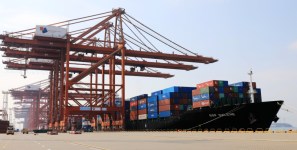Air Freight Market Update
Many freight forwarders are showing a continued growth trajectory for air freight shipping. Perhaps it is a sign of the times, as shippers are continuing to use different strategies to work around persistent and significant supply chain disruption. To keep high-priority shipments moving, shippers have, at times, been choosing air over ocean in recent years.
However, overall demand for air freight dropped slightly in January this year, which may have shippers wondering – does this mean we may start to see demand and capacity levels regulate? Will air freight no longer be as necessary this year? The short answer is no, not anytime soon. In fact, demand for air freight is forecast to increase this year amidst significant capacity constraints and continued high depend for goods along with the need for inventory replenishment. While demand did drop early 2022, air freight will continue to be a key strategy for shippers.
For Many, A New and Necessary Strategy
A January 2022 C.H. Robinson customer research study confirmed that a significant number of shippers are using new strategies to manage through continued disruption, which has included a shift of more freight from ocean to air. Specifically, 52% leveraged new modes, ports, or trade lanes during the pandemic that they plan to continue using in 2022. And, over a quarter of shippers (28%) say that a top strategy was transporting freight by air that had previously been by ocean.
Interestingly, many have said shifting strategies has been a silver lining to the pandemic, with 44% of shippers reporting that one of the positive outcomes of the past year and a half is that they used new transportation strategies they hadn’t in the past, creating more choices for their business.
We continue to see interest from our customers in charter flights and ocean-to-air conversions, especially for moving high-priority freight such as we did for a customer moving emergency COVID-19 test kits when Omicron surged in January. Additionally, high tech and heavy industries such as automotive have leaned on air freight to help catch up with demand and mitigate high levels of disruption.
An Alternative to Ocean Port Congestion
Continued uncertainty in ocean shipping is likely to continue motivating ocean-to-air conversions. Port congestion is still causing significant delays, with vessels sitting at anchor for days waiting to berth. Global schedule reliability is at its lowest recorded level since 2011.
We’re advising shippers to consider the estimated average delays in vessel schedules (7-30 days depending on the port) and add them to the overall expected transit time to ensure proper planning to meet delivery schedules. In addition, long anchor times outside U.S. ports will cause vessels to be late on their return to Asia.
While the ongoing congestion at the Ports of Long Beach and Los Angeles, specifically, has resolved a bit in recent weeks, inventory is still backed up in transit from trans-Pacific routes. Additionally, trans-Pacific routes coming from China will continue to operate at a high level of variability due to stringent COVID-19 protocols, leaving shipments vulnerable to more delays.
In general, to help mitigate these issues, we’re advising shippers to move ocean freight two to three months in advance of normal timelines as opposed to the traditional 4-5 weeks. But, in cases where that isn’t possible, air freight can be a helpful alternative to keep shipments moving.
Latest Air Market Trends
As shippers consider air, it’s important to stay updated on trends that will affect capacity and pricing. While recovery times at airports remain elevated relative to pre-COVID-19 conditions, there are fewer extreme delays. However, throughout March and into Q2, global demand for air freight is expected to creep up and congestion will likely return.
Globally, the return of passenger flights has been slow and inconsistent. Surges in the COVID-19 Omicron variant continue, and markets with stricter policies are putting downward pressure on air capacity. That said, lowering of travel restrictions in some key markets may lead to capacity additions. It’s also important to consider using surface transportation when an outbreak arises, with past unforeseen shutdowns, C.H. Robinson has helped multiple companies shift their freight to another airport via truckload to keep their freight moving.
Tips for Next Steps
Overall, as shippers continue trying to navigate disruption and decide how best to move freight, here are some of the most impactful ways we’re seeing them find success:
-Seek creative solutions – Consider what different modes, trade lanes, or inland transportation strategies can keep shipments moving. It might be something new.
-Use information and technology – Find tools that provide timely market updates, visibility into shipments, and the predictability needed to know when to adjust.
-Closely communicate and collaborate with supply chain partners – Especially in this kind of market, it’s good to have a partner that can provide a range of options from global forwarding to surface transportation to customs and more. Working closely together, you and can better understand challenges coming from all sides be able to quickly adapt to changing circumstances.
To help stay updated on market trends and how they will impact capacity and pricing, check out the monthly updates on our Global Freight Market Insights page.





Leave a Reply